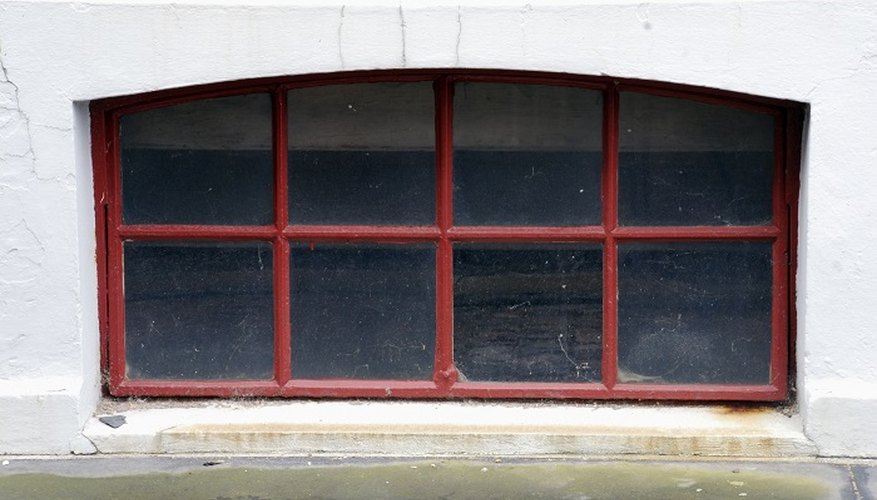Window wells are a common feature in basement flats or the cellars of some large houses. However, the options for shop-bought window well covers are usually limited and the coverings can be expensive. Also, many older window wells come in unusual sizes that shops don't cater for. If you have the right materials and tools, you may be able to take the cheaper option and make window well covers of your own.
Purpose
Consider why you want your window wells covered. Shops usually sell plastic covers that are designed to keep water out, especially in case of storms or floods that can ruin basements if the water is left unchecked. Plastic coverings also help minimise heat loss from basement areas, providing an extra layer of insulation for the heat that gradually seeps upwards through the window. On the other hand, your primary concern may be debris and leaves blowing into the window covering and getting trapped there, in which case you can go for a much simpler style of window well covering. Or you may be worried about children accidentally falling inside windows wells or getting trapped inside them, which may lead you to a different window well design completely. Since you are making your own covering, you can tailor it to your needs.
- Consider why you want your window wells covered.
- Or you may be worried about children accidentally falling inside windows wells or getting trapped inside them, which may lead you to a different window well design completely.
Materials and structure
The best weatherproof window well coverings are made with plexiglas, or a similarly tough but flexible material. Keep in mind that these waterproof coverings require both a top covering section and a base section, usually with rubber edges that act as seals. These coverings usually lift up towards the house in one piece, with the hinges grounded in the foundation. This will require significant drilling, framing, lining and expert caulking to bring the structure together. Simpler coverings can be made out of wire or light plastic sheeting stretched across a frame. The wire fencing can be used to keep out most debris and keep window wells safe for children and animals, while light plastic stretched on a hoop of pipe or wire can protect against rain at a moment's notice. If you are interested in aesthetics, then you may want to take more time and design a wood frame that you can paint or stain to match the house.
- The best weatherproof window well coverings are made with plexiglas, or a similarly tough but flexible material.
- Keep in mind that these waterproof coverings require both a top covering section and a base section, usually with rubber edges that act as seals.
